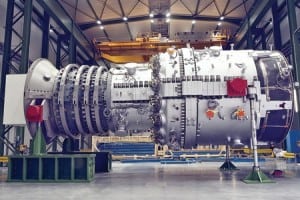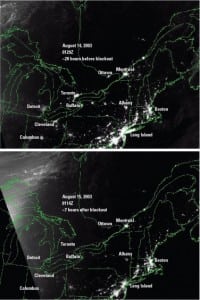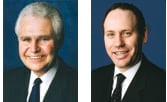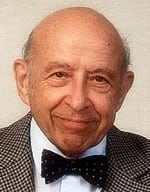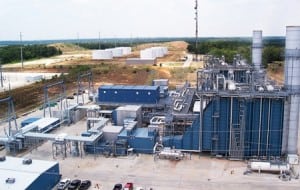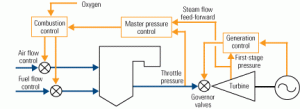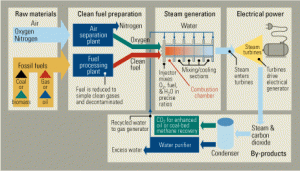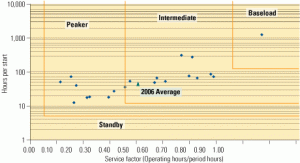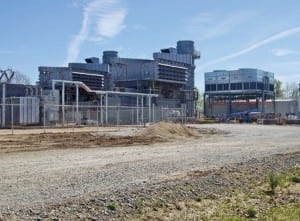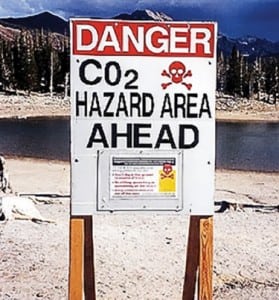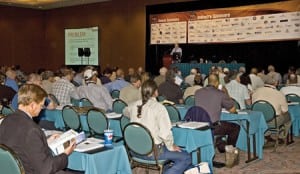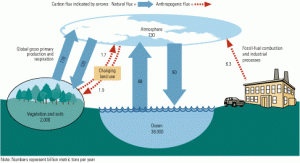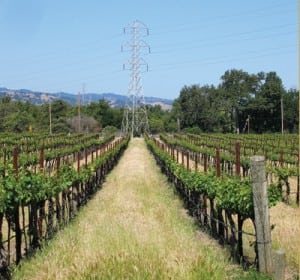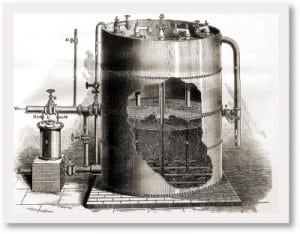In This Issue
-
New math
James Thurber once said that it is “easier to ask some of the questions than to come up with all the answers.” As a magazine editor, I get to ask lots of questions and make plenty of suggestions. Not everyone likes my suggestions, but I trust the readers of POWER to make their own studied […]
-
Commentary
The electricity challenge of the 21st century
When tackling a problem, engineers bring both skepticism and optimism to the task. As the nation’s electric power engineers look to fill America’s looming capacity gap, they will need to apply healthy doses of both. The U.S. Department of Energy’s Energy Information Administration (EIA) projects a 50% increase in electricity demand over the next 25 […]
-
Coal
Global Monitor (June 2007)
Siemens, E.ON to test world’s largest GTG / Midwest to add 76-MW peaker in Kansas / Tapping the sun near Phoenix / Georgia Tech developing 3-D PV nanocells / Wind farms with hydrogen backup? / BNSF , union come to terms / IPL to buy 200-MW wind project / India to improve environmental monitoring / POWER digest
-
O&M
Focus on O&M (June 2007)
Ready for your NERC close-up? / Synthetic oils for industrial applications
-
Legal & Regulatory
Politicians and state PUCs must shape energy policy together
Historically, states have delegated responsibility for establishing and implementing their energy policy to a public utilities commission (PUC). During most of the 20th century, state PUCs operated with relatively little interference from state legislators. In California, for example, the PUC, created by the state constitution, was vested with the broad authority to independently regulate […]
-
Business
Chauncey Starr: A personal memoir
Chauncey Starr, founder of EPRI—the Electric Power Research Institute—and its first CEO, passed away on April 17, 2007. The previous day, a celebration of his recent 95th birthday had been held at EPRI, where Chauncey held forth for more than an hour on his life experiences and lessons learned. He was in fine fettle. Chauncey […]
-
Instrumentation & Controls
Old plant, new mission
Since 1999, the Texas grid operator ERCOT has given plant owners economic incentives to upgrade and extend the life of their generating units. Lower Colorado River Authority has seized the opportunity to modernize the control systems of its 1970s-vintage Sim Gideon natural gas–fired steam plant. Sophisticated control schemes now calculate the toll taken by running units under severe service conditions—including the high ramp rates that a plant must execute to sell ancillary services.
-
O&M
Drum pressure the key to managing boiler stored energy
At the heart of most boiler combustion control systems (and most coordinated boiler/turbine control systems as well) is throttle pressure correction, usually applied by the “master controller.” Throttle pressure is considered a key variable to control because it represents the energy balance between the boiler and the turbine. When throttle pressure is constant, the boiler […]
-
Coal
Kimberlina: A zero-emissions demonstration plant
FutureGen may be getting the headlines, but it’s not the only superclean demonstration plant in town. In fact, you could argue that other technologies are further down the evolutionary timeline. Case in point: Clean Energy Systems’ adaptation of rocket engine technology to radically change the way fuel is burned. The result is a true zero-emissions power plant.
-
Gas
Siemens G-Class technology builds for the future
Gas turbine manufacturers aren’t selling as many machines today as they did in the hyperactive 1990s. But they are still continuing to refine G-Class technology. It has been about eight years since the first steam-cooled SGT6-6000G from Siemens Power Generation entered service. Take a quick tour of what must now be considered a mature gas turbine technology.
-
Business
How to make VARs—and a buck
Last month, POWER weighed the pros and cons of the various grid interconnection options available to distributed generation plants. This month we explore the technology choices for generating reactive power, or volt-amperes reactive (VARs), which utilities are willing to pay for as an ancillary service.
-
Coal
Global warming, rising costs complicate capacity additions
If little else is clear about the future of the U.S. power industry, this much is: Electricity rates are going up across the country, and will continue to. None of the esteemed panelists at the CEO session of the ELECTRIC POWER 2007 Conference & Exhibition in Chicago last month actually said those words. But much […]
-
Coal
PRB Coal Users’ Group grapples with supply chain challenges
Consumption of Powder River Basin coal continues to grow, from 28 million tons annually in the mid-1970s to what is now 400 million tons per year. Existing plants as far east as Nova Scotia burn the low-sulfur coal to comply with increasingly stringent limits on SO2 emissions, and PRB coal has become the fuel of […]
-
Nuclear
Flies in the nuclear power ointment: Supply chain complexity, shortage of skilled labor
Perhaps the most interesting aspect of the nuclear track at the ELECTRIC POWER 2007 Conference & Exhibition (EP07) in Chicago last month was the attendance. For the most part, its sessions were jammed, leading session chairmen to mention how different this was from prior years. Clearly, nuclear has buzz. The environment looks promising: The regulators […]
-
Coal
Climate change concerns drive projects to curb CO2
In a carbon-constrained world, CO2 capture and storage (CCS), although considered the most radical of the carbon abatement technologies (CATs), seems to be favored over combustion and steam cycle improvements alone. However, CCS is the least commercially developed of the CAT options; at present, there are only field prototypes for its various forms. Nonetheless, most […]
-
Smart Grid
Smart grid still just a "vision thing"
T&D systems with embedded intelligence have a great future, and they always will. Too many powerful forces—politics, money, and power—remain to be reconciled before consumers and utilities can work together, seamlessly, to reduce electricity demand and eliminate delivery system bottlenecks.
-
News
Retrospective
June 1886 POWER reported on the art and science of water treatment and its effect on boiler performance in the cover story this month. “Dr. J.G. Rogers, an authority on steam generation, is quoted as stating that one-sixteenth of an inch of scale in a boiler will require the extra consumption of 15% more fuel; […]




